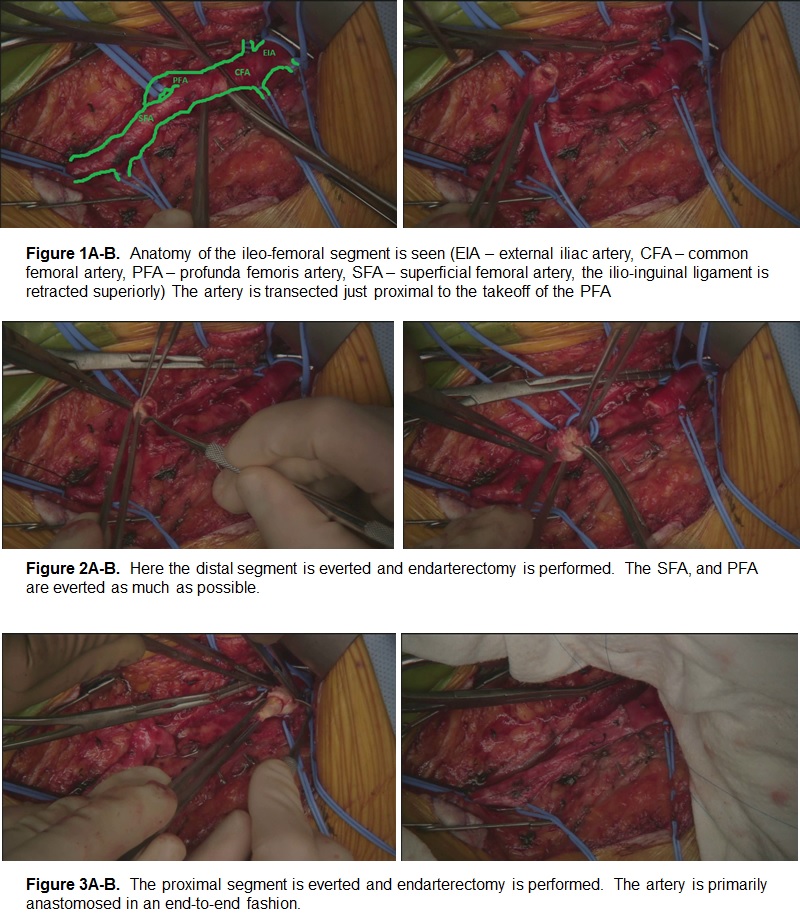Back to 2016 Karmody Posters
Eversion Femoral Endarterectomy for the Treatment of Ileo-femoral Occlusive Disease, A Description of Technique and Series of Cases
Matthew Kronick, M.D., Natasha Saiyed, M.D., Marc Norris, M.D., Neal Hadro, M.D., Marvin Morris, M.D..
Baystate Medical Center, Springfield, MA, USA.
Objectives: Eversion endarterectomy with oblique arteriotomy and primary closure is well described for the treatment of extra-cranial cerebrovascular disease. Longitudinal arteriotomy and closure with patch angioplasty is the standard for ileo-femoral arterial occlusive disease. A potential drawback of this technique is the introduction of prosthetic material. We herein describe a technique of oblique arteriotomy, eversion endarterectomy, and primary closure for the treatment of ileo-femoral occlusive disease and present our series of cases. We propose that this technique can be applied to the treatment of occlusive disease in the ileo-femoral segment, and is a valuable addition to the armamentarium of the vascular surgeon.
Methods: Eversion endarterectomy was performed in 11 patients by a single surgeon at our institution from 2013-2014. Four patients had isolated endarterectomy, 5 had endarterectomy combined with iliac (5) and/or superficial femoral artery (2) stenting, 1 had endarterectomy with iliac stenting and femoral-femoral bypass, and 1 had endarterectomy with femoral-popliteal bypass. In each case the target artery was divided obliquely with eversion of the proximal and distal segments, endarterectomy, and primary end-to-end closure.
Results: Technical success was achieved in 9 of 11 patients with 2 patients requiring concomitant patch angioplasty during the index procedure for an intimal flap in one patient and a luminal narrowing in the other. Follow up ranged from 6 weeks to 16 months. There were no amputations, deaths or surgical site infections. There was subjective symptom improvement in 9 of 11 patients; 2 patients subsequently required re-interventions (1 profundoplasty with patch angioplasty and 1 SFA stent) due to poor outflow.
Conclusions: In patients with ileo-femoral arterial occlusive disease, eversion endarterectomy either alone or in association with endovascular stenting or surgical bypass appears to be a safe and effective technique. In our initial case series technical success was achieved in 9 of 11 patients without amputations, deaths, or surgical site infections; 2 patients required re-intervention during the follow up period for poor outflow. We feel this technique can be applied to a broader range of patients with ileo-femoral occlusive disease and may obviate the need for prosthetic material and patch angioplasty. 
Back to 2016 Karmody Posters
|







